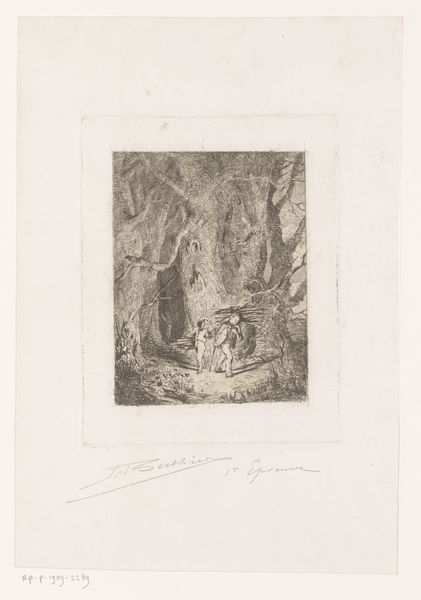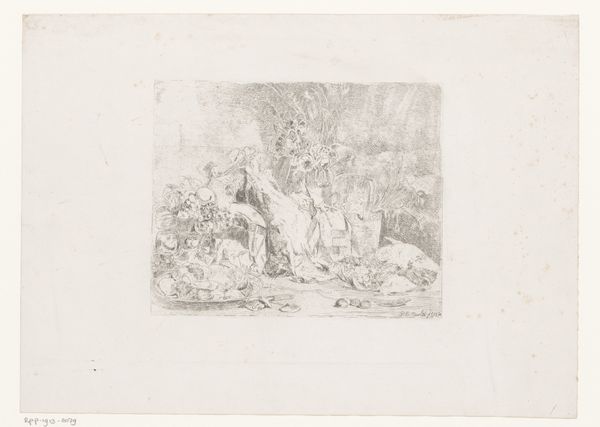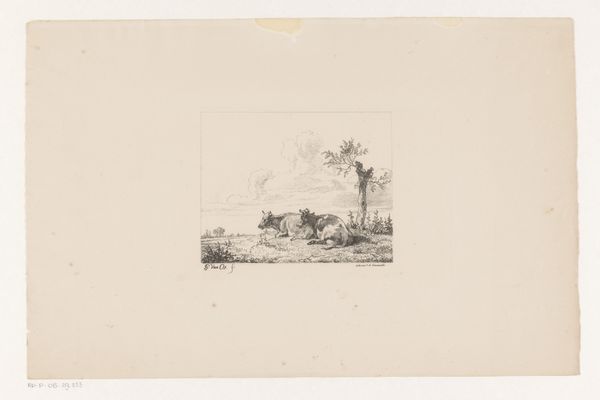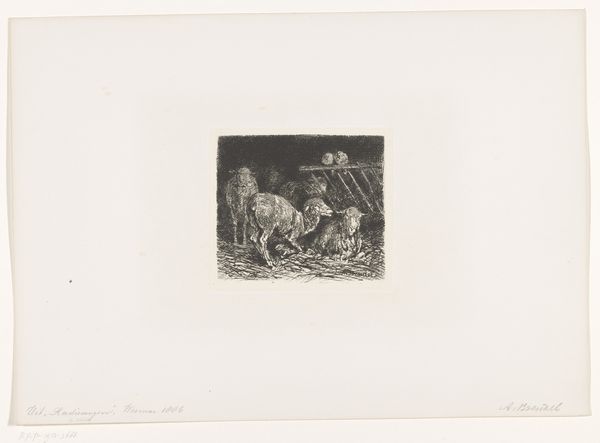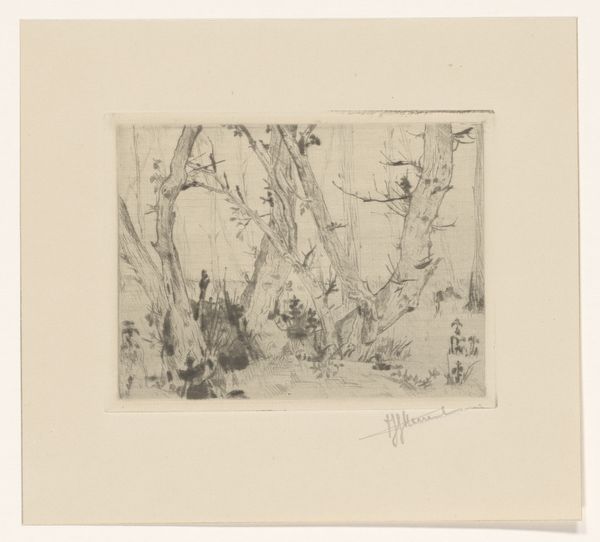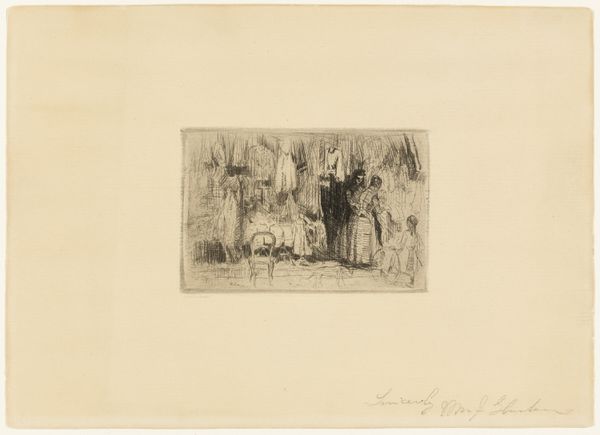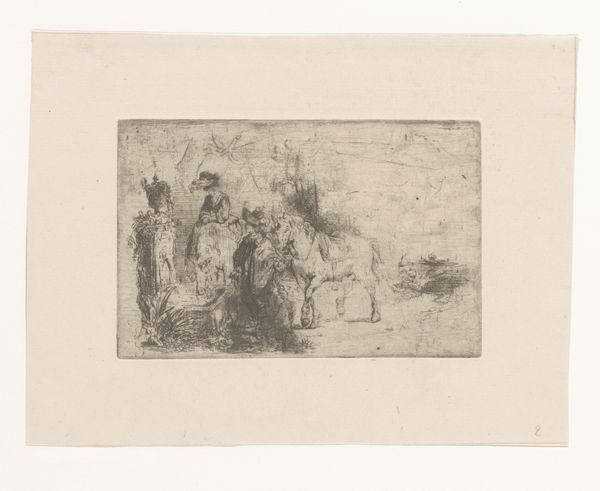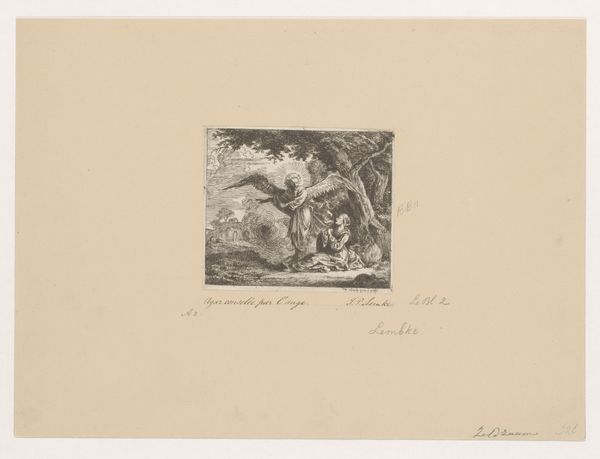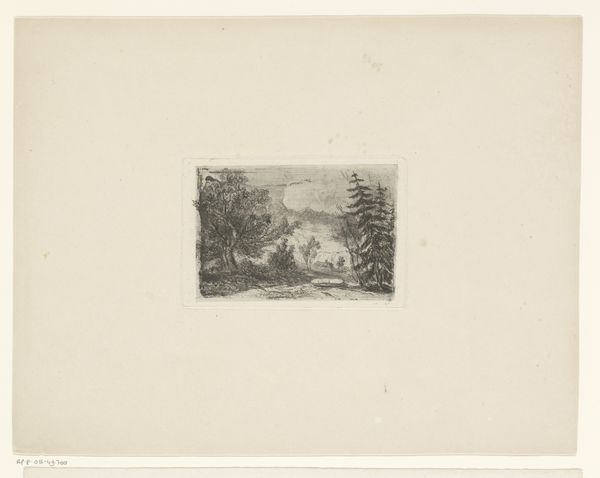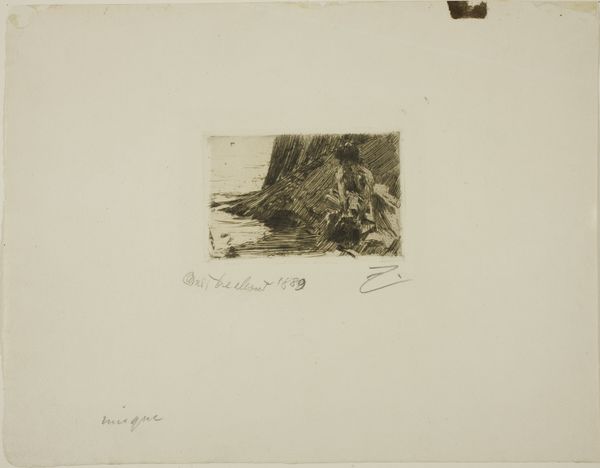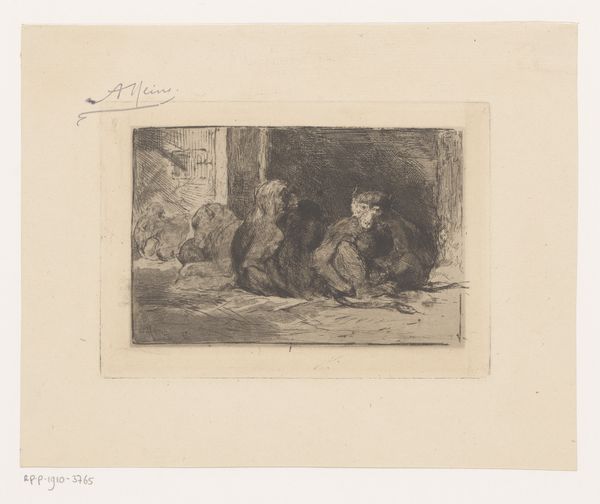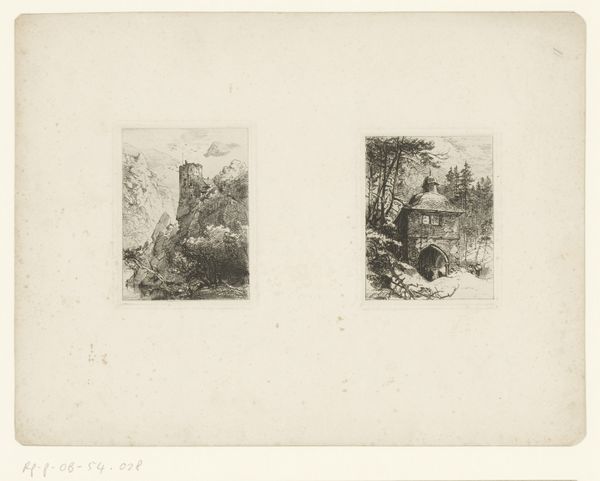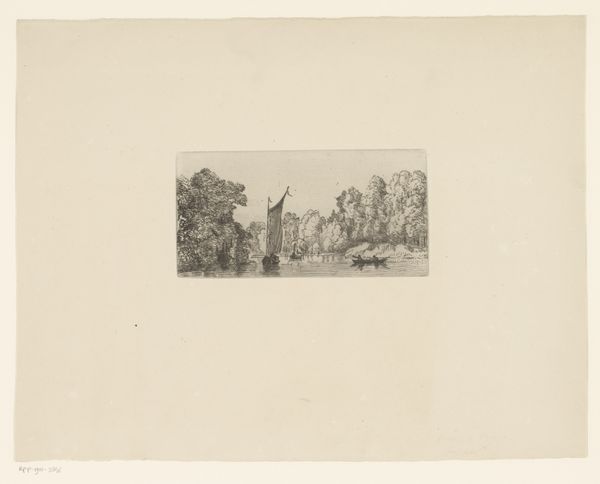
print, etching
#
narrative-art
#
animal
# print
#
etching
#
realism
Dimensions: height 150 mm, width 257 mm
Copyright: Rijks Museum: Open Domain
Editor: So, this is "Vijf hondachtigen" – Five Canines – by Armand Heins, created in 1887. It's an etching, a kind of print. It feels… cramped? All these dogs huddled together in a small space, looking a bit anxious. What do you see in it? Curator: I see a powerful, if subtle, evocation of the domestic space, the threshold between wildness and the hearth. The animals are canids, yes, but their postures, their shared space… what symbols do these inherited depictions stir within us? Editor: Inherited depictions? What do you mean? Curator: Consider the wolf, the dog, as potent symbols across cultures. Loyalty, ferocity, wilderness, guardianship... All bundled into this etching. Heins uses the compact composition to emphasize the animals’ interdependence but also hints at vulnerability. Editor: So it's not just about the literal animals, but about what they represent? Almost like a family portrait? Curator: Precisely! And think about the act of huddling itself. A gesture of seeking warmth, protection… a fundamental, almost primal need for community. Doesn’t that echo throughout art history, across religious icons and family portraits alike? Editor: That makes me see it differently. It’s more about connection, even comfort, than anxiety. I initially focused on how they seemed packed in. Curator: Indeed. The etching reminds us that images are rarely neutral. They carry layers of meaning accumulated through centuries. These visual languages inform how we instinctively read an artwork. Editor: This has shown me to look beyond the surface and consider the bigger picture and symbolism to better interpret artworks. Curator: And it illustrates the power of art to remind us that, even across species, there's a common thread of emotional experience, of the need for belonging.
Comments
No comments
Be the first to comment and join the conversation on the ultimate creative platform.
